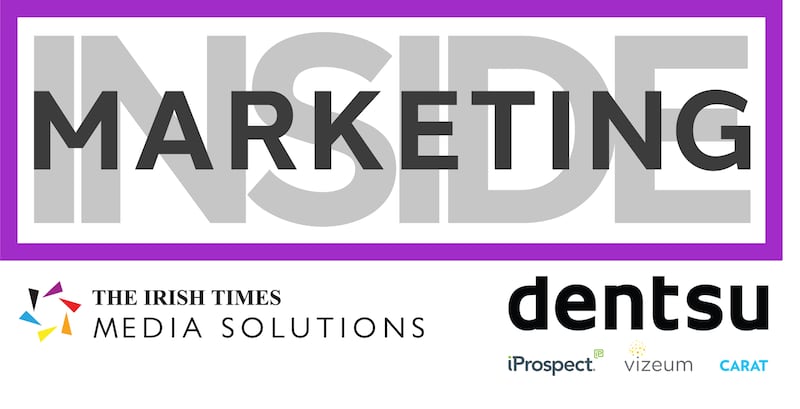The coronavirus emergency poses an unprecedented set of challenges for businesses. As marketers, it is difficult to know how best to respond: do we cut spending, maintain a strong brand presence, or wait and see what competitors do?
There is much to be learned from crisis periods of the past. We have reviewed the empirical evidence following crises such as the financial crash in 2008 and Sars, coupled with early learning from brands in China, Hong Kong and Italy.
For brands that can continue to trade, we have identified five guiding principles which will protect brand equity during the crisis period, and deliver growth into the recession ahead.
When crisis hits, it is natural for companies to shift to survival mode and cut costs. And a common response is to cut the marketing budget.
However, research from McGraw-Hill, the IPA and Kantar consistently shows that brands that maintain marketing spend during a crisis increase sales and market share. Moreover, the decision has a lasting impact for several years after the crisis period, with brands cutting spend proven to continue to lose market share long after marketing spend has been reinstated.
For example, during the economic recession of the 1990s, Pizza Hut and Taco Bell took advantage of McDonald’s decision to cut advertising spend. They increased sales by 61 per cent and 40 per cent respectively, while McDonald’s sales declined by 28 per cent.
Appropriate response
However, the type of advertising maintained needs to reflect the coronavirus (also known as Covid-19) context. Following the financial crash in 2008, most brands cut brand building work, in favour of driving short-term sales. But that simply isn’t an appropriate response today, because brands either cannot meet the demand for their product as a result of panic buying, or they have significantly reduced demand, potentially impacting their ability to trade at all.
Therefore, brands that continue to invest in advertising during this crisis should focus on long-term brand building because that investment will ultimately support recovery. As the adage goes, “when times are good, you should advertise. When times are bad, you must advertise.”
An uncertain operating environment requires rapid responses. GroupM in Italy recommends scenario planning for the crisis, recovery and “new normal” periods.
During the crisis, brands should evaluate the impact of social restrictions and react in real-time. For example, Ant Financial in China was quick to support struggling business customers by reducing lending rates by 10 per cent for 1.8 million small businesses.
While there are early signs of recovery in China, much is still unknown about the recovery trajectory. According to GroupM, brands should develop alternative plans in preparation for the known unknown to come.
And when the “new normal” emerges, brands must be prepared for growth. While we expect most brands to reintroduce marketing spend to pre-crisis levels at this point, the brands that maintained spend all along will not only recover faster, but will also grow.
During a crisis, it is more important than ever for brands to understand the consumer perspective, and exhibit sensitivity in their communications. Positive and aspirational messaging favoured by many brands will likely fall flat with consumers, preoccupied by “coronanxiety”, who have fears for their livelihood. KFC was quick to pull an ad in the UK which focused on “finger-licking” amid complaints that it was inappropriate at a time when good hand hygiene is critical.
Behavioural economics has taught us that framing is often more important than messaging itself. Therefore brands do not need to abandon their usual message. Rather, they may need to put a new frame around it, which reflects the brand’s fundamental position within the context of the new Covid-19 reality.
Purpose-led communications
The crisis provides perfect market conditions for brands to showcase their purpose and values. And while it doesn’t take a pandemic to recognise the need for purpose-led communications to be genuine, it certainly cements the fact.
Brand response in Hong Kong has been particularly strong. When public hospitals were under-equipped with protection gear, the Li Ka Shing Foundation donated 250,000 face masks and protective gowns to hospital staff. AXA and Ping An Insurance launched free medical coverage for front-line medical staff. Harbour City reduced up to 50 per cent of shopping mall rent for its tenants. Standard Chartered Bank allowed its customers to repay interest-only on outstanding loans for the next six months.
There are also some great examples closer to home. An Post workers continue to provide vital support to many in self-isolation, with initiatives such as providing cards to every Irish household and sending them for free to maintain contact with isolated loved ones.
In the wake of the financial collapse in 2008, brands such as Netflix, Lego, Amazon and Dominos grew significantly by innovating in response to rapidly changing consumer needs and spending power.
According to Forbes, Amazon sales grew by 28 per cent in 2009. The tech company continued to innovate with new offerings during the recession, and notably developed Kindle products which helped to grow market share. On Christmas Day 2009, Amazon customers bought more e-books than printed books for the first time. Amazon ultimately managed to reposition itself as a technological innovator by identifying a sustained demand for books by consumers who had considerably less disposable income to spend.
Innovating at pace
The coronavirus crisis is no different, presenting opportunities to brands open to innovating at pace. For example, O’Neill’s, best known for manufacturing sportswear, is producing protective clothing to support the health services north and south of the Border.
As Seth Godin once said, “We’ve greatly exaggerated the risk of sinking, without celebrating the value of swimming.”
And while the current context is undoubtedly different, the sentiment holds true. Now is not the time to stand still. Now is not the time to descend into panic and wait, cowering in the wings, until your competitors do something.

As an industry, we need to plan in a more agile way to enable real-time response to the current crisis, while simultaneously planning for growth. We need to safeguard brand positioning by continuing to invest in advertising, albeit adapting our messaging to remain sensitive and relevant. And we need to embrace new ways of doing things and deliver new solutions to our consumers. And above all, we need to take positive action.
In short, it’s time to swim.
References
- AdAge, 2020
- Alderfer, Clayton P. (1969), "An Empirical Test of a New Theory of Human Needs," Organizational Behavior and Human Performance, 4 (2), 142-175
- Beukes, M., 2019
- Binet, L. and Field, P, 2018, "Effectiveness in Context"
- Business Insider France, 2020
- Chan, J., 2020
- Clapp, R., 2020
- Dasgupta, A., 2020
- Deloitte Consulting, 2013, "How advertising fuels the UK economy", Duncan, A., 2019
- Edelman, 2020
- Forbes, 2019
- GroupM, 2020, "COVID-19 in Italy: Early trends and implications"
- IPA, 2008, "Advertising in a downturn"
- IPA, 2008-2019, Quarterly Bellwether Reports
- Khamitov, Mansur, Khamitov, Mansur, Yany Grégoire, and Anshu Suri (2020), "A Systematic Review of Brand Transgression, Service Failure Recovery and Product-Harm Crisis: integration and Guiding Insights," Journal of the Academy of Marketing Science, forthcoming
- Ling, T., 2020
- McDonald, J., 2020
- McGraw Hill
- MediaSense, 2020
- Millward Brown, 2008, "Marketing During Recession: Survival Tactics"
- Millward Brown, 2008, "Managing Your Brand in a Recession." February, https://www.millwardbrown.com/ (June 18)
- Narayan, A., 2020
- O'Connor, C., 2020
- Ocreative, 2020
- Ongko, A., 2020
- Precourt, G., 2020
- Qulech, J., 2008
- Savanta, 2020
- Sharpe, B., 2012, "How Brands Grow"
- Sriram, D, 2020
- Tellis, G. and Tellis, K., 2009, "A Critical Review and Synthesis of Research on Advertising in a Recession"
- The Drum, 2020
- Whiteside, S., 2020
- Wunderman Thompson, 2020, "COVID-19 Crisis: Early trends and implications.
[ irishtimes.com/insidemarketingOpens in new window ]
[ available on SoundcloudOpens in new window ]












